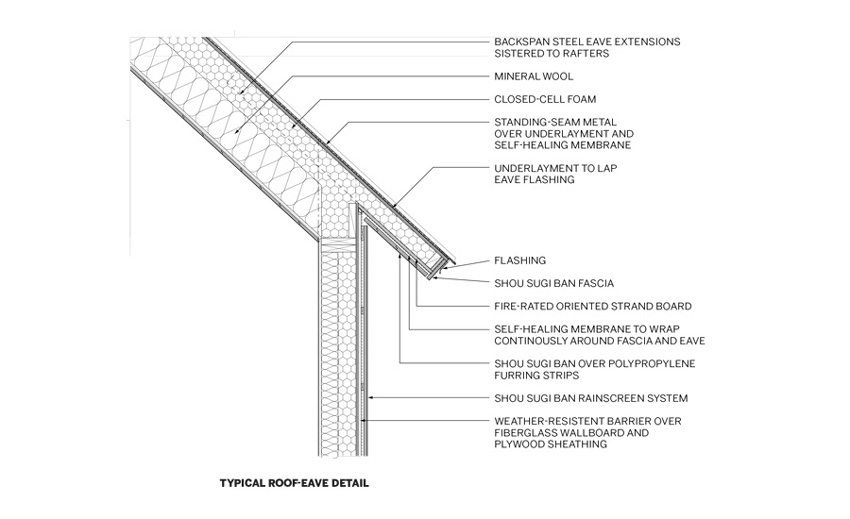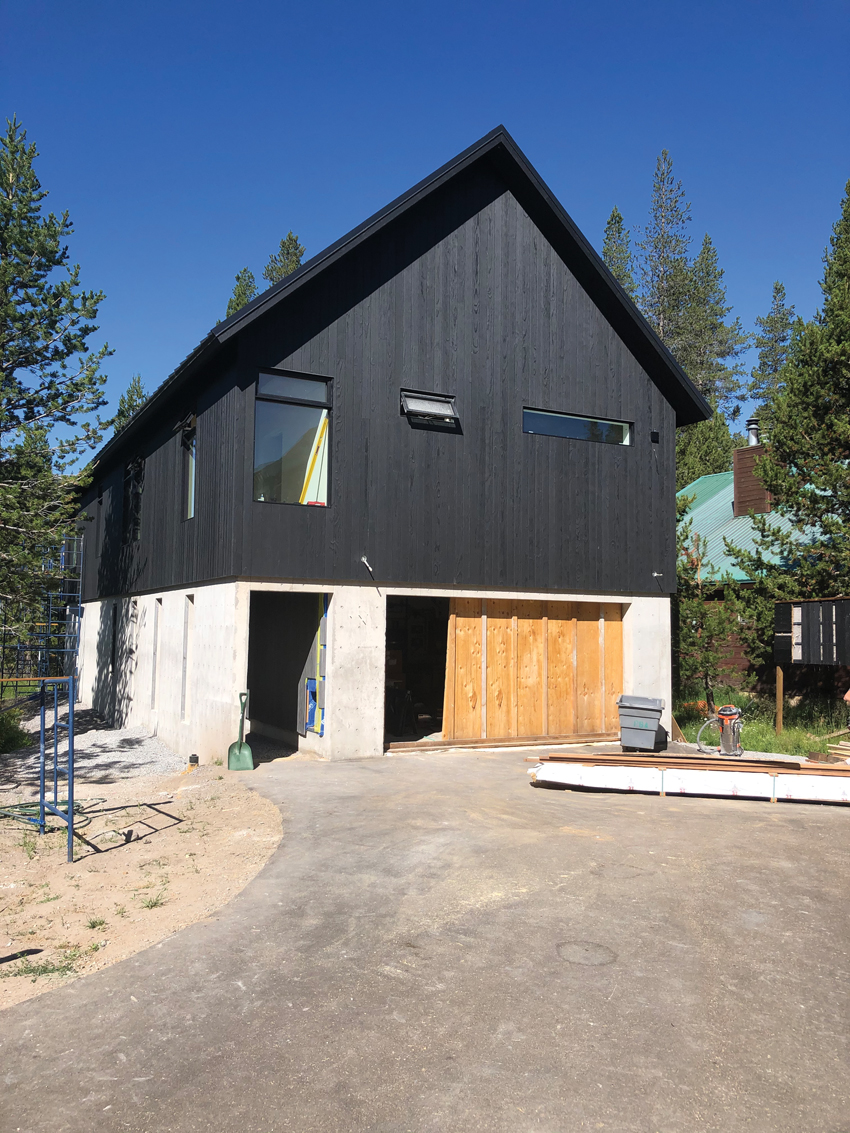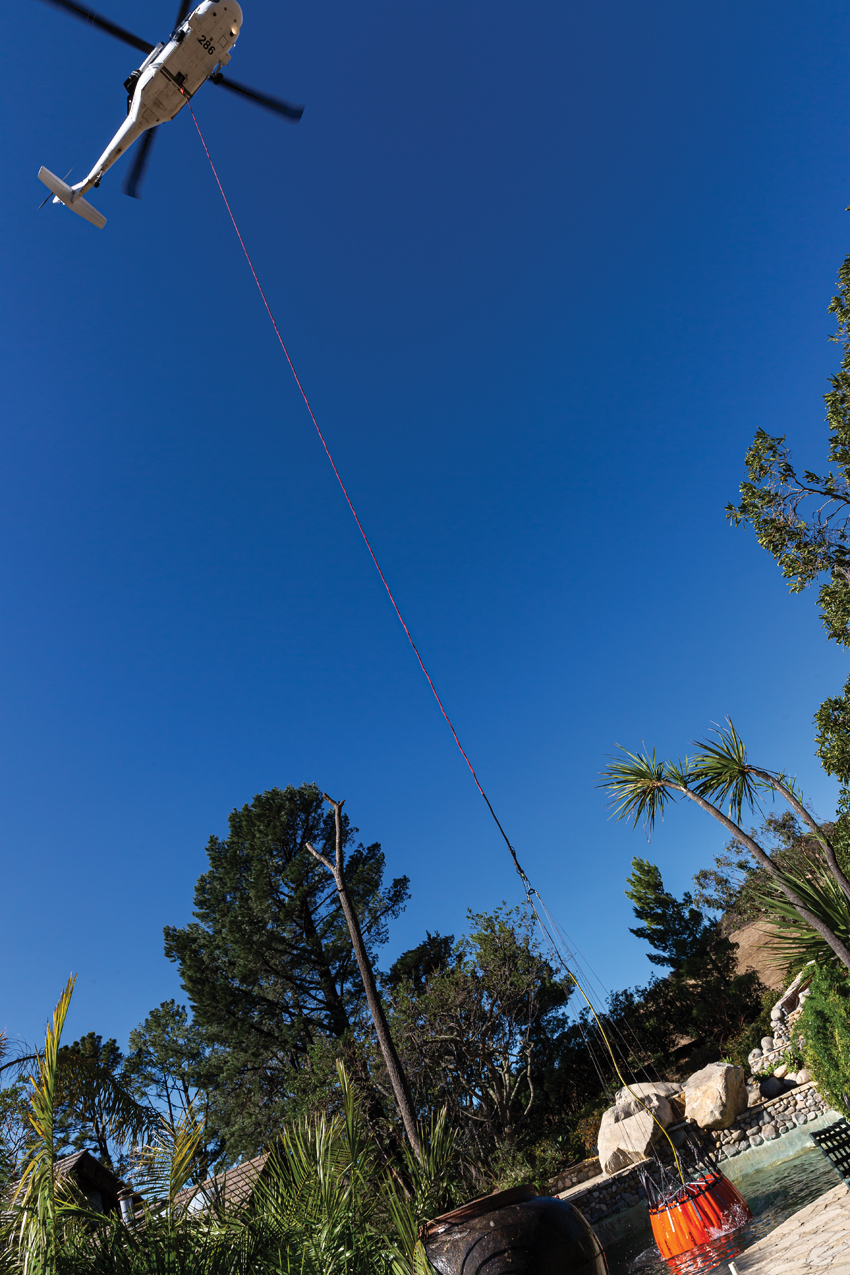Wildfire-Adapted Design
Another deterrent to compliance has been the perception of increased construction costs. But a 2018 study by Montana-based Headwaters Economics, an independent, nonprofit research group, found “negligible cost differences between a typical home and [one] constructed using wildfire-resistant materials and design features.”
Fire Hazard Severity Zone (FHSZ) designations—rated moderate, high, or very high by CAL Fire—play a key role in determining whether state wildfire codes are compulsory for a given area. Dave Sapsis, who is overseeing the current redrawing of CAL Fire’s FHSZ map—a project he anticipates completing before the 2021 wildfire season—says it’s too early to confirm whether it will expand the zones. “But my suspicion,” he admits, “is that some areas will be added that weren’t on the old map” (which dates from 2011). The upcoming version, a two-plus-year effort, deploys more advanced modeling, including sophisticated fire-climate analysis—and, he adds, “since the last one, we’ve been through a lot of very, very big fires—so that’s been a reality check.”


PHOTOGRAPHY: ALEXANDER JERMYN ARCHITECTURE
A SIMPLE, gabled standing-seam metal roof and shou sugi ban siding are among the fire-resistant features of a house nearing completion at the edge of California’s Tahoe National Forest, by Alexander Jermyn Architecture (bottom).
Some municipalities have nonetheless sought loopholes, resisting a hazard-severity rating, probably because of pressure from developers and concern from homeowners that their fire-insurance rates will jump and their property values drop. Yet other communities—after experiencing horrific wildfire directly or in the vicinity—have voluntarily tightened local ordinances. Rancho Santa Fe, in San Diego County, for example, took action following the nearby Cedar Fire, of 2003, developing proactive regulations, many of which exceed today’s state codes (requiring, for example, ember-proof, fire-rated roof vents, instead of fine-mesh screening). The new standards were initially applied to five pilot areas, later put to the test in the 2007 Witch Fire. While 37 older houses, unfortunately, burned, the trial clusters lost no houses. Rancho Santa Fe—now seeking grants for homeowners needing financial assistance with retrofitting—holds its residents to high standards, with scrupulous protection of defensible space. Its rigorous weed-abatement program includes roadside clearance, zone-maintaining guidance for each property, annual inspections, and full-time oversight in the high-growth season (in contrast to the preponderance of municipalities and neighborhoods elsewhere with weak enforcement). “We’re all in this together,” says Rancho Santa Fe deputy fire marshal Conor Lenehan. “It has to be a community effort, on every level.”
And code compliance can dovetail with inventive design. For a soon-to-be-completed house at Lake Serena, an area with a “very high” FHSZ rating, bordering California’s Tahoe National Forest, Berkeley-based Alexander Jermyn Architecture is using Japanese-style shou sugi ban. That dark, beautifully charred timber—here, domestically sourced and Class-A fire-rated—will serve as flame-resistant siding. “The charring burns off the cellulose, the flammable component in wood,” explains firm principal Alexander Jermyn, “but it’s also common sense—think how hard it is to relight logs long after a campfire.” For this lakefront site, prone to heavy snowfall, the house’s ground floor, beneath the shou sugi ban–clad level, was designed to keep out fire and water, with a thick slab on grade, no crawl space, and exterior walls of cast-in-place concrete with few openings. Enhancing these protections, the concrete contains a porosity-minimizing admixture and the densely insulated, fire-rated exterior walls are 8 inches thick. The roof, covered in Class-A standing-seam metal, is a simple single-gable form—eliminating valleys, where complex roofs, or projecting dormers or skylights, might collect dead leaves and embers. “Many of the things that make this house watertight and energy code–compliant,” says Jermyn, “also make it fire-resistant.”

PHOTOGRAPHY: RUSSELL SIMPKINS (LEFT); FUSE ARCHITECTS + BUILDERS (RIGHT)
WEATHERING STEEL and concrete block helped a Fuse Architects + Builders’ bathroom structure remain unscathed when the CZU Lightning Complex fire tore through a sleepaway camp in California’s Santa Cruz Mountains this summer—shown before the blaze (above, left) and after (above, right).
Meanwhile, in the recent CZU Lightning Complex Fire, in the Santa Cruz Mountains—which blazed through 86,509 acres and 1,490 structures—two modest outbuildings at a sleepaway camp survived when all the surrounding construction lay in ashes. With materials including heavy-gauge weathering steel and ground-face concrete masonry, the local firm Fuse Architects + Builders had designed the two communal shower/bathroom buildings for fire resistance and resiliency. The broad underlying concrete pad defines defensible space. With a concrete block-encased core, protecting the water heater, plumbing, solar controls, and batteries from excessive heat and flames, both buildings emerged from the inferno with their lights on and water systems working. The open-sided “floating” roofs (while not suited to enclosed houses) prevented trapped heat buildup. Inside, even toilet-paper rolls remained intact (thanks, in part, to wind conditions that kept embers out).

PHOTOGRAPHY: © CLAY BUSH
FIREFIGHTERS used the swimming pool (visible at lower right of photo) of Malibu, California, architect David Hertz to help contain the nearby Woolsey Fire in 2018.
In Malibu, architect David Hertz—whose Studio of Environmental Architecture includes a think tank/consultancy focused on such climate-change issues as wildfire—has had to defend his own house against conflagration. In the Woolsey Fire, of 2018, his property became the firefighters’ local operations base. “One key to resiliency is redundancy,” he says: “layered systems, backups for the backups.” He also emphasizes the importance of “not bringing fire right to the house” with wood fences or decks that can act as wicks. And he encourages investment in independent on-site water sources (such as cisterns), along with auxiliary (generator- or battery-operated) power supplies, and non-electric pumps or gravity-fed systems to draw water from pools or ponds. In containing the nearby Woolsey blaze, CAL Fire drained his swimming pool, via helicopter buckets, three times.
Certainly, collective wildfire protection among neighbors is essential—as is collaboration among different agencies and disciplines. “The need to develop holistic solutions, with firefighters, architects, builders, landscape designers, policy makers, and fire scientists all working together, has become critical,” observes Dicus. “We’ve been in our own silos way too long.” Hertz goes further, saying, “A call to action is in order—there’s a real urgency. We all need to act, as the adage goes, ‘as if our house is on fire!’ ”
Suplemental Materials
Building a Wildfire Resistant Home: Codes and Cost, Headwaters Economics, Stephen L. Quarles and Kelly Pohl, November 2018. (Through page 11)
 |
Architectural Record is the #1 source for design news, architect continuing education, and info on sustainability, houses, projects, and architectural products. |








